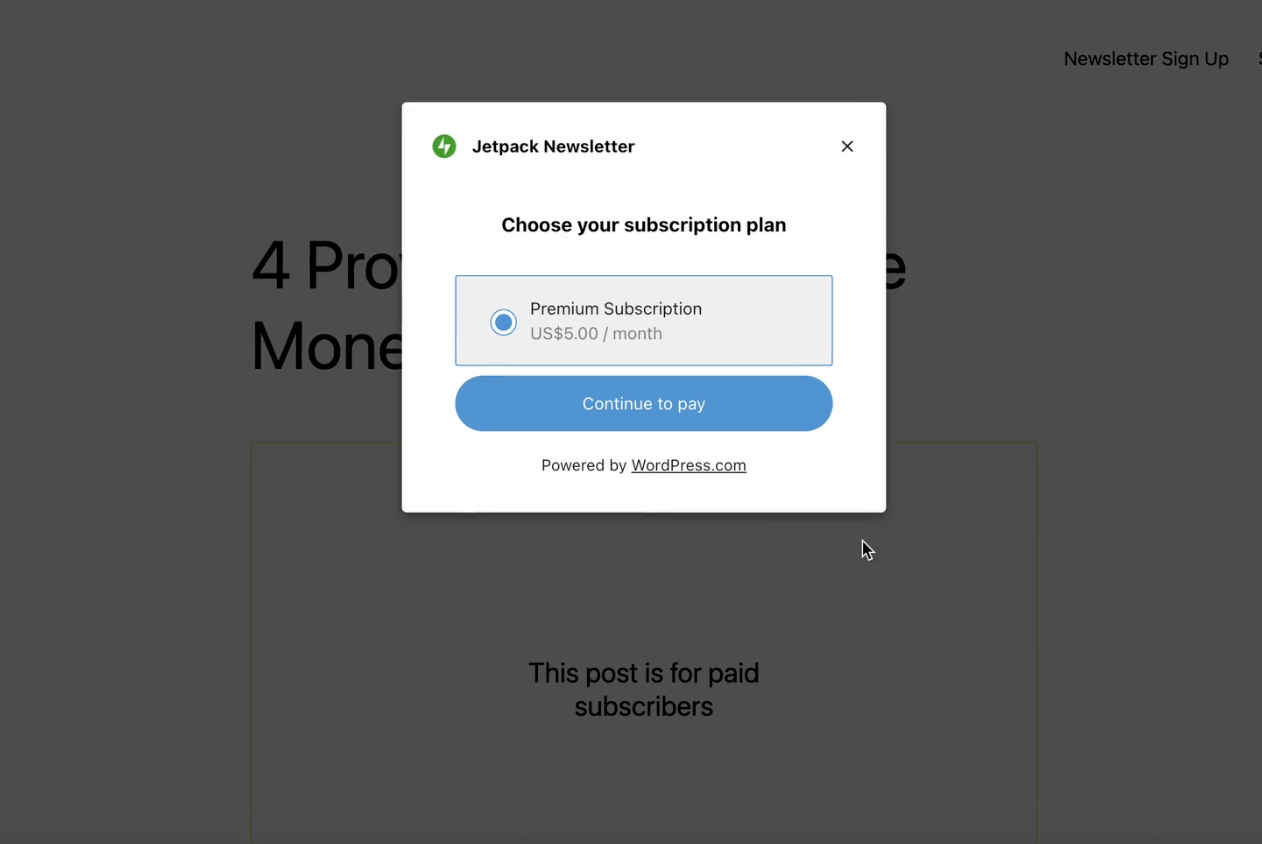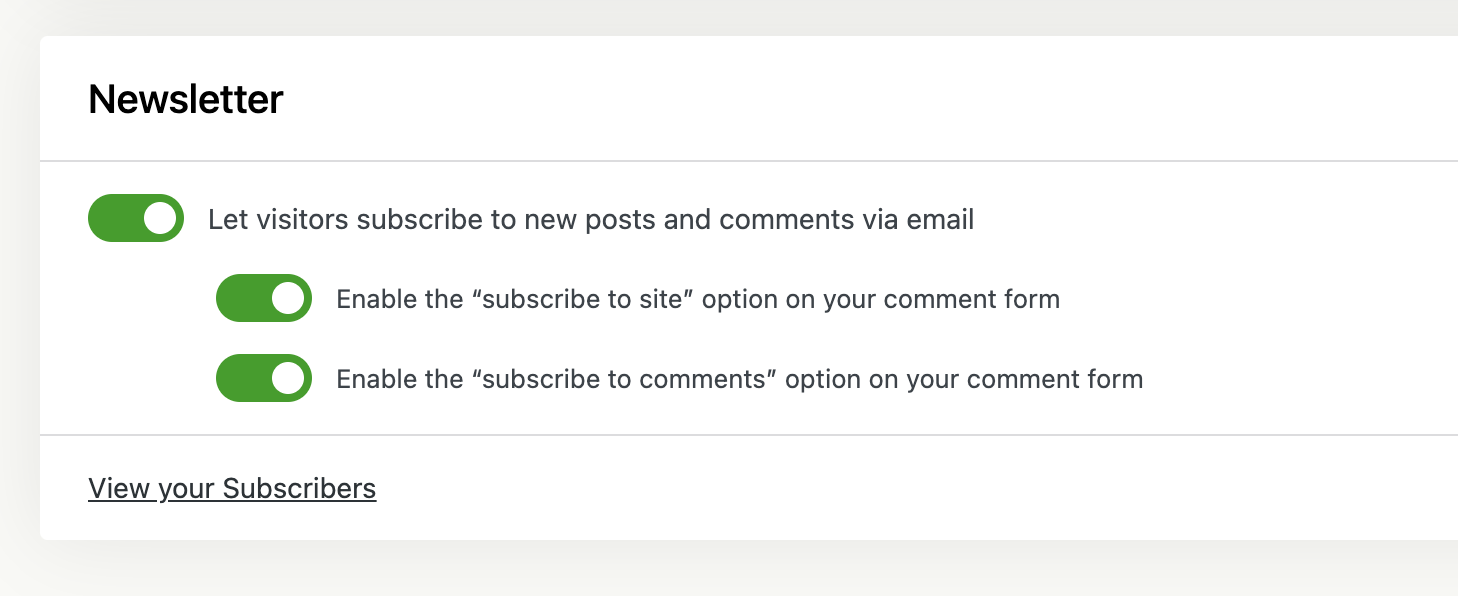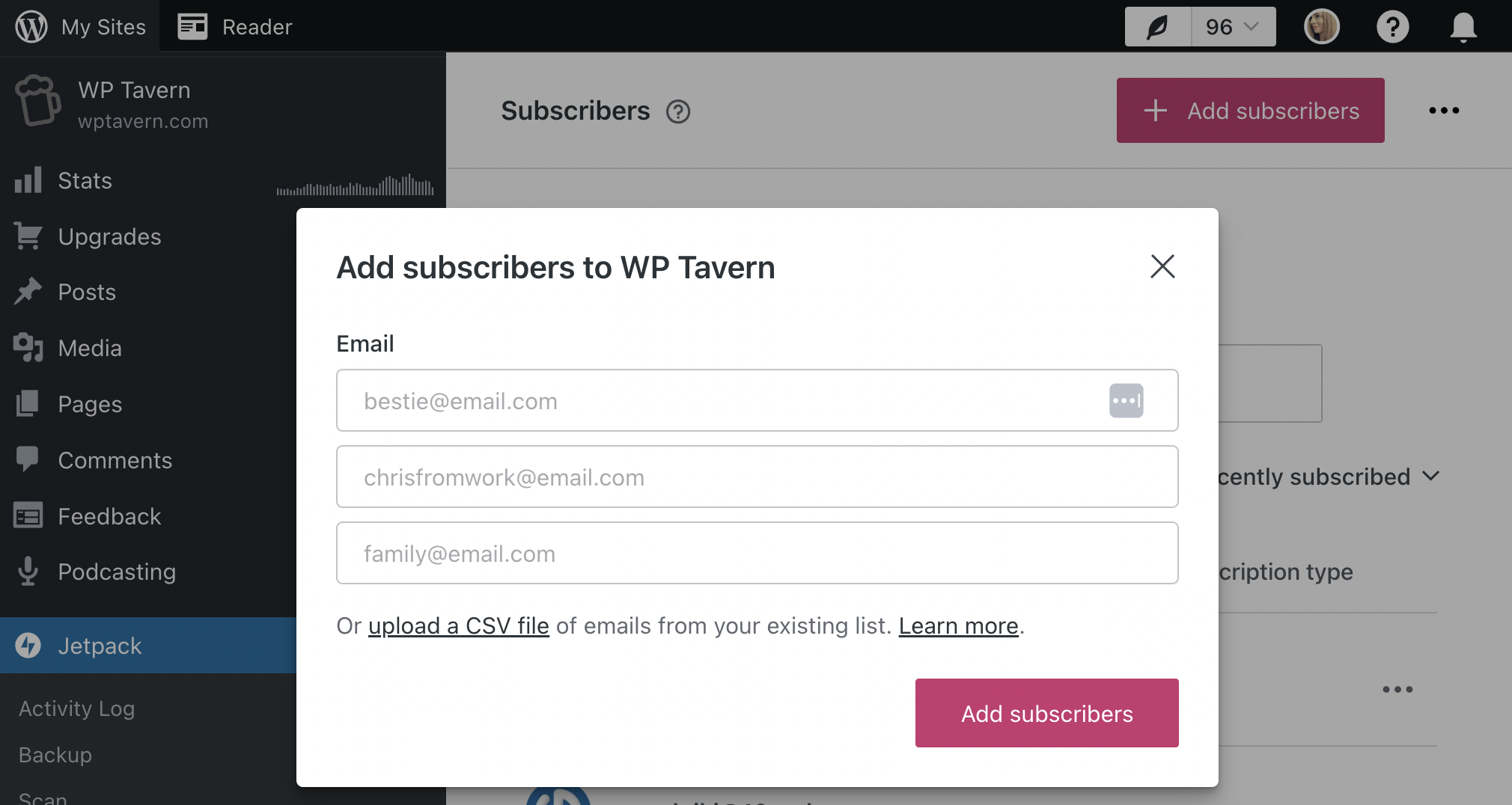Jetpack 12.4 was released today, launching the plugin’s Newsletter product. It allows users to send blog posts as newsletters, without the hassle of having to copy and paste from the WordPress editor into another newsletter service’s campaign editor and reformat it for email. This launch comes seven months after WordPress.com launched its newsletter offering, which uses the same underlying infrastructure to deliver emails.
Jetpack Newsletter is launching as a free product, with a percentage of fees collected from creators who choose to offer paid subscriptions:
Fees are only collected when you accept payments. Fees are based on the Jetpack plan you have and are calculated as a percentage of your revenue from 10% on the Free plan to 2% on the Complete plan (plus Stripe fees).

Jetpack users are probably familiar with the plugin’s ability to send posts to subscribers via email. The newsletter feature uses this same infrastructure that site owners have relied on for years to allow subscribers to get updates in their inboxes when new posts are available.

Newsletters can be turned on under the Discussion tab in the Jetpack settings. Many Jetpack users likely already have this turned on.

The Subscribe block can be placed anywhere on the site and new subscribers will be sent a confirmation email to confirm their subscription. They have the option to choose between instant, daily, or a weekly digest, as well as control the time and day they receive their digests. Subscribers can also pause or unsubscribe from the site.
Subscriber import and other features, such as newsletter stats for opens and clicks, is available via the Jetpack admin pages on WordPress.com.
At this time, newsletter creators can only import up to 100 subscribers via CSV file. This is severely limiting for all but the smallest of newsletters, but the Jetpack team has confirmed that it is high on their list of priorities to change as it creates too much of a barrier. The limit was set for spam prevention, but it makes it nearly impossible to migrate to Jetpack Newsletter if you have a popular newsletter. Those who are on paid plans can upload unlimited subscribers.

Newsletter creators can change the site name and logo for their emails and paid users will have more customization options in the future.
One thing that sets Jetpack Newsletter apart from the vast majority of other traditional email service providers is that it allows unlimited email sends and unlimited subscriber lists for both free and paid users.
Most popular services like Mailchimp, Brevo, and SendGrid, allow only a few hundred emails to be sent per day or up to 1,000 per month for free users. Paid plans get expensive quickly as a newsletter’s subscriber base grows. Emails and subscriber numbers usually determine the pricing for these services, which makes Jetpack’s product stand out from the crowd, especially for those who intend to independently monetize their newsletter through ads and paid sponsorships.
Jetpack Marketing Lead Rob Pugh said that although popular newsletter services are more limited in emails and subscriber numbers, they also offer a completely different feature set. The Jetpack Newsletter product is aimed at competitors like Substack.com, Beehiiv.com, and Ghost.org, which also all offer unlimited email sends. On paid plans, Jetpack Newsletter’s offer beats Substack, as it collects 2% (plus Stripe fees) as compared to Substack’s take of 10% plus credit card fees.
Newsletter creators should be aware that Jetpack Newsletter’s unlimited emails and subscribers may not last forever, as the FAQ section of the product states that it is an introductory offer:
As an introductory offer, we do not limit you or charge you based on your email list size. This may change in the future. Fair usage policy applies.
Jetpack representatives were not able to confirm the limits of fair usage or how long the introductory period will last.
“Launching without a limit on emails isn’t the most financially responsible thing, but we’re most excited to get this feature into the hands of people to get feedback,” Pugh said. “We’re focused on the immediate roadmap to make the product better, although there will likely be a limit at some point in the future if we see extreme use from people on free plans.”
He said the Jetpack team goes out of its way to make pricing changes as fairly as possible “and we don’t want to pull the rug out from anyone, so we’ll certainly consider how people are impacted before making changes.”
Until the limited subscriber import issue has been solved, any pricing changes down the road are only likely to affect newsletters that are just starting out getting people signed up. Apart from this limitation, Jetpack Newsletter is making a competitive debut in the market. For those who are already using Jetpack and have an existing subscriber base, it makes it nearly effortless to add paid subscriptions. Using the block editor is far easier than most newsletter campaign editors out there, and Jetpack streamlines the sending process so creators don’t have to copy and paste between email services.
WP Tavern


Leave a Reply
You must be logged in to post a comment.